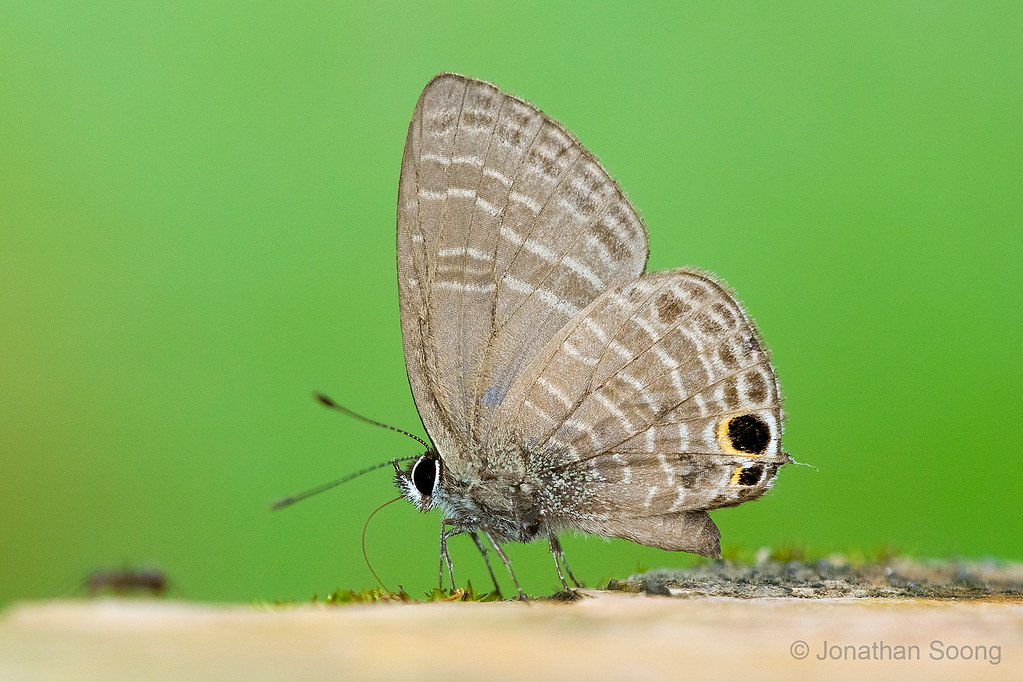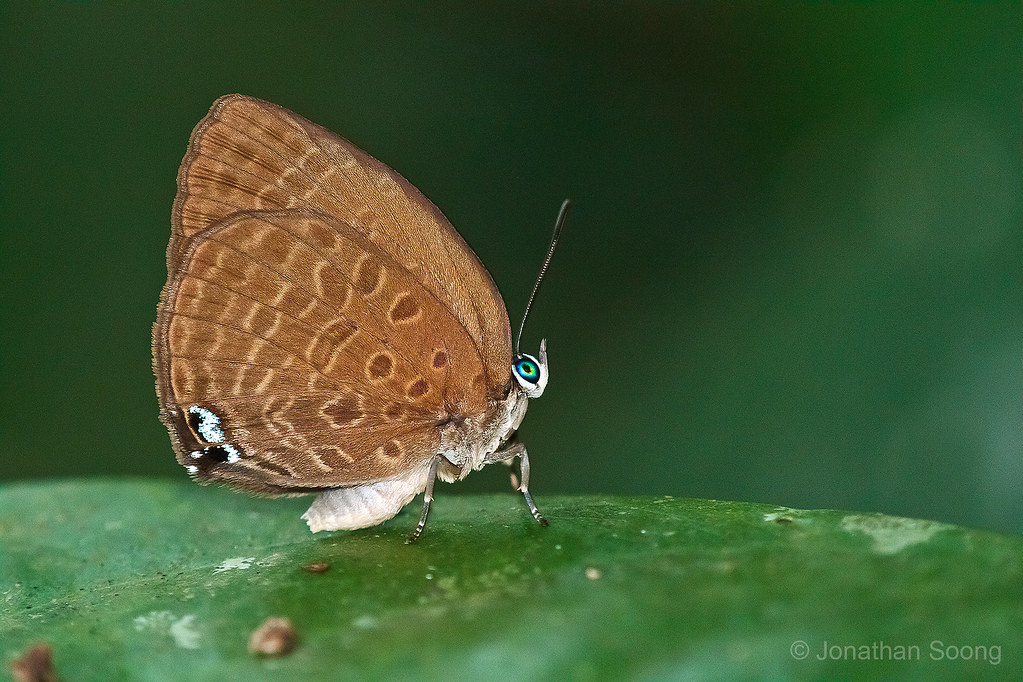Thanks Dr Seow!
Thanks Dr Seow!
cheers
Jonathan
Here's a Nacaduba from today... it is quite faded. Is it possible to ID this one?
ID as Nacaduba subperusia lysa

Last edited by Banded Yeoman; 07-Oct-2018 at 04:56 PM.
cheers
Jonathan
WOW Jon it looks like N. subperusia lysa, which would be a rediscovery. Notice the post-discal series on the hindwing is very straight and practically touching the submarginal series; the gap between is smaller than all the others in the pavana group. The submarginal striae, in stark contrast, are much more rounded than the striae immediately basad to them.
Where was this taken?
Aaron Soh
This was taken in usr! The upperside was a dull purple if I remember correctly..
cheers
Jonathan
Thanks Aaron and Dr Seow for the ID input! It is very likely to me that all our original Nacaduba species are still extant, just that they may have been either ignored or mis-identified in the past. It doesn't help that most of our encounters with them are fleeting, flying-by sightings. I often see them fluttering high above the ground in the treetops.
cheers
Jonathan
Here are a few more Lycaenids...
In my view, the 6-line Nacaduba species can be more confusing to separate than the 4-line ones. I've attempted to identify them based on what I've read from previous posts. Dr Seow, Aaron, what do you think?
1) Nacaduba berenice male
2) N. beroe male
3) N. beroe male
4) Nacaduba beroe female
Arhopala. epimuta male

Last edited by Banded Yeoman; 07-Oct-2018 at 04:58 PM.
cheers
Jonathan
Concur it is N. subperusia lysa.
N. sanaya can sometimes cause confusion but the FW postdiscal band is always distinctly dislocated at vein 6.
http://1.bp.blogspot.com/-XEY63bA0JP...aya+elioti.jpg
The other similar one which normally is commoner is N. hermus swatipa.
N. hermus swatipa.
FW postdiscal band not or barely dislocated at vein 6.
Dark striae often weakly present.
HW tornal black spot almost always with some metallic blue scales.
http://nlliew66butterflies.blogspot....pa-corbet.html
TL Seow: Cheers.